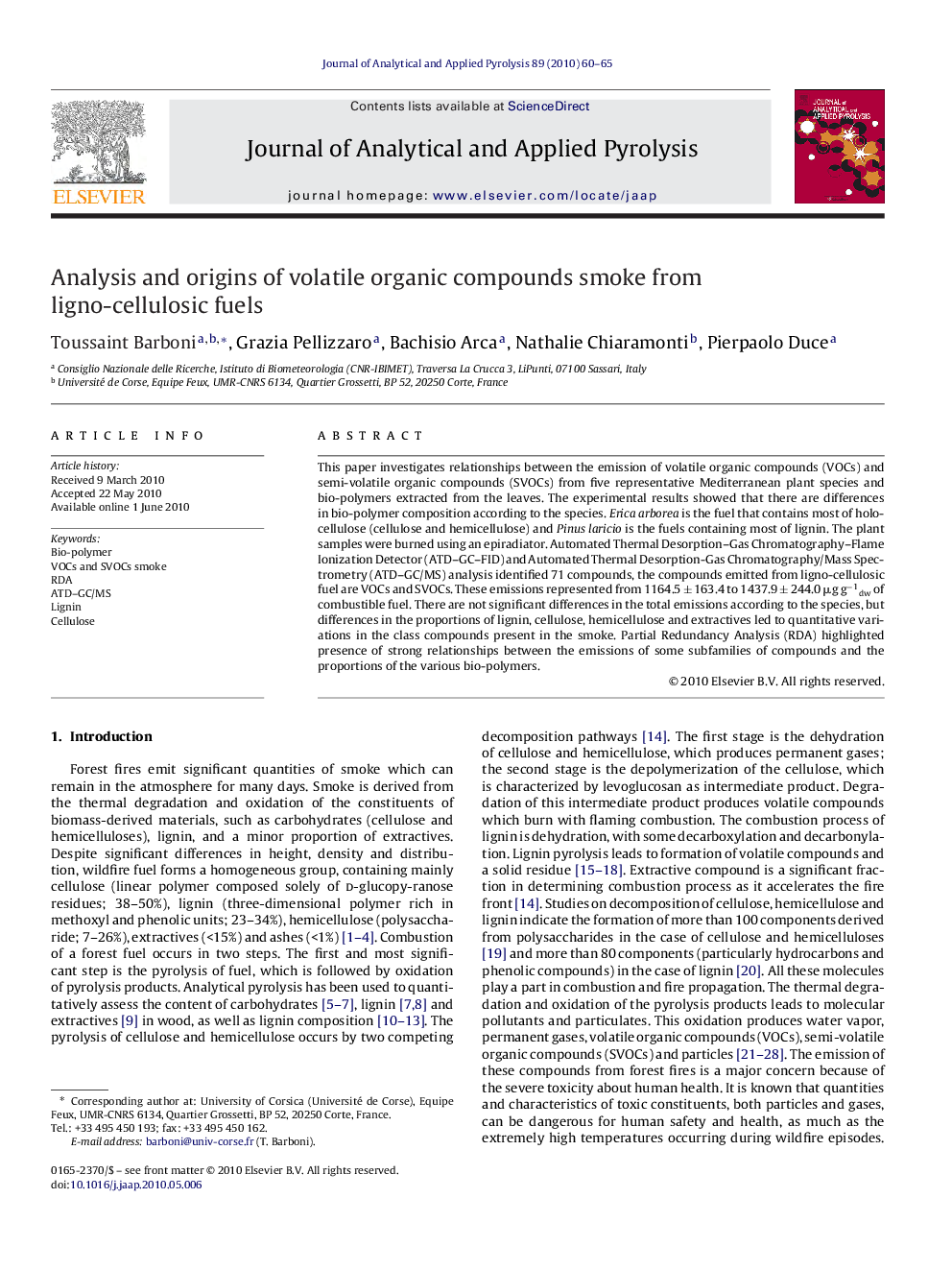| Article ID | Journal | Published Year | Pages | File Type |
|---|---|---|---|---|
| 1197055 | Journal of Analytical and Applied Pyrolysis | 2010 | 6 Pages |
This paper investigates relationships between the emission of volatile organic compounds (VOCs) and semi-volatile organic compounds (SVOCs) from five representative Mediterranean plant species and bio-polymers extracted from the leaves. The experimental results showed that there are differences in bio-polymer composition according to the species. Erica arborea is the fuel that contains most of holocellulose (cellulose and hemicellulose) and Pinus laricio is the fuels containing most of lignin. The plant samples were burned using an epiradiator. Automated Thermal Desorption–Gas Chromatography–Flame Ionization Detector (ATD–GC–FID) and Automated Thermal Desorption-Gas Chromatography/Mass Spectrometry (ATD–GC/MS) analysis identified 71 compounds, the compounds emitted from ligno-cellulosic fuel are VOCs and SVOCs. These emissions represented from 1164.5 ± 163.4 to 1437.9 ± 244.0 μg g−1dw of combustible fuel. There are not significant differences in the total emissions according to the species, but differences in the proportions of lignin, cellulose, hemicellulose and extractives led to quantitative variations in the class compounds present in the smoke. Partial Redundancy Analysis (RDA) highlighted presence of strong relationships between the emissions of some subfamilies of compounds and the proportions of the various bio-polymers.
